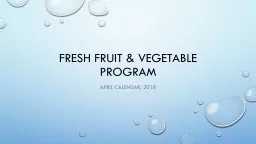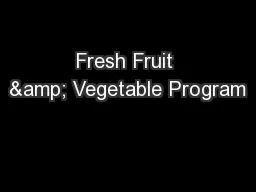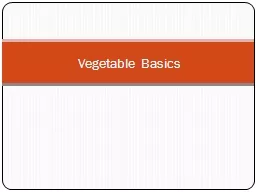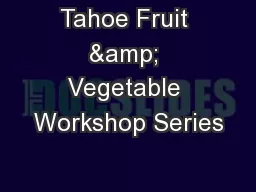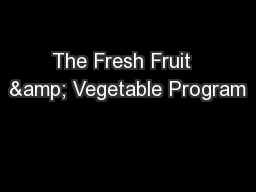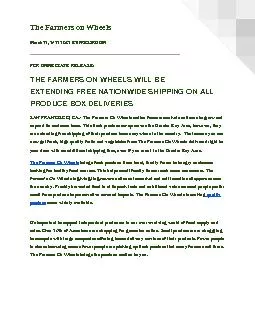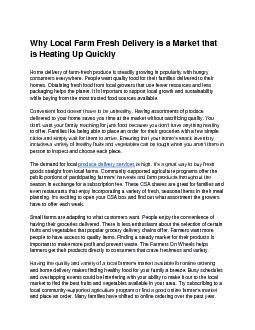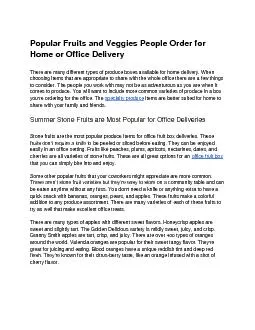PPT-FRESH FRUIT & VEGETABLE PROGRAM
Author : danika-pritchard | Published Date : 2018-12-05
April Calendar 2018 WATERMELON Watermelon has everything you need to beat scorching summer heat Wonderfully delicious and juicy melons are the great source of muchneeded
Presentation Embed Code
Download Presentation
Download Presentation The PPT/PDF document "FRESH FRUIT & VEGETABLE PROGRAM" is the property of its rightful owner. Permission is granted to download and print the materials on this website for personal, non-commercial use only, and to display it on your personal computer provided you do not modify the materials and that you retain all copyright notices contained in the materials. By downloading content from our website, you accept the terms of this agreement.
FRESH FRUIT & VEGETABLE PROGRAM: Transcript
Download Rules Of Document
"FRESH FRUIT & VEGETABLE PROGRAM"The content belongs to its owner. You may download and print it for personal use, without modification, and keep all copyright notices. By downloading, you agree to these terms.
Related Documents

